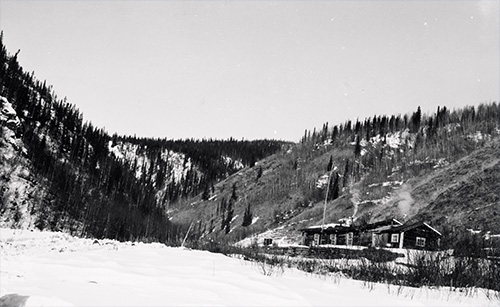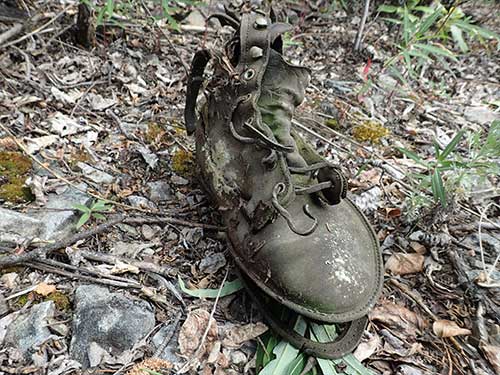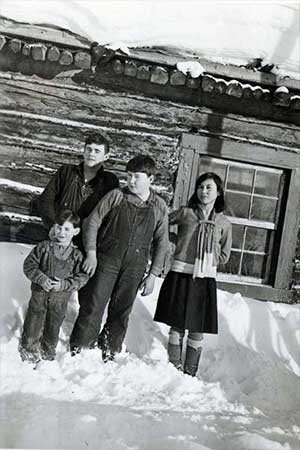
Franklin, Alaska: A town that once wasBy NED ROZELL
August 24, 2018
There, up a path of floury soil, was Franklin, Alaska. Like many Alaska ghost towns, it was a less-than-ideal place for kids and dogs: rusted nails, jagged edges and punky wood floors that can no longer bear weight. The four kids and two dogs in our party were all over it. No one was there to meet us at Franklin, population zero, the site of the first major gold strike in Interior Alaska. It was a living town from 1887 to 1948.
We noticed stone steps fitted into the hillside with care, a shed with an intact roof, and a dozen spruce-log buildings on their way to becoming soil. In the early 1900s, gold miners and other river travellers called Franklin “Dogtown” because so many were staked at the mouth of Franklin Creek. Those dogs were ready to pull sleds over the trail that followed the river and ridges to both Chicken and Eagle. The Franklin roadhouse is still identifiable by its 39-foot by 29-foot log outline. It now has no roof and the log floor joists are exposed, but the structure was once a lively place; built into a south-facing cliffside of sedge and shale, Franklin was home to 200 people in the late 1800s.
Meals at that roadhouse cost $1, paid in gold dust, reported geologist and government explorer Louis Prindle, who left his name on a lonely volcano in the boreal forest not far away. Prindle, who visited Franklin in the early 1900s, saw this: “A small collection of cabins, picturesquely located on the small flat at the mouth, is known as Franklin and includes a post office and roadhouse.
“The gold was easy to mine and more easily spent on the little flat at the mouth of the creek, which was then crowded with miners.” Howard Franklin was long gone by the time Prindle passed through. The town’s namesake was one of two prospectors who in 1886 journeyed up the Fortymile River (then known by Natives as the “Creek of Leaves”). He found gold on the Fortymile and a little later on the ankle-deep creek others named for him. In 1898, geologist/explorer Josiah Spurr described the gold found in Franklin Creek as “nuggety.” He wrote of seeing both 30-ounce and 14-ounce chunks recovered there. The 30-ouncer was more than four inches long and one inch wide. Franklin did not keep his discovery a secret. Word of gold pulled prospectors up the Fortymile (so named because the river’s mouth was 40 miles downriver from Fort Reliance). Suddenly, hundreds of men were crawling over the domes and creeks of the Fortymile. A few pioneered the California technique of hydraulic mining by building wooden flumes to carry water from Franklin Creek one-quarter-mile away and force it through metal pipes. There, they firehosed away hillsides to reach gold-bearing gravels. Many Fortymile miners chased the later strike in Circle in 1893. More stampeded to the Klondike gold rush near Dawson, which started 10 years after Franklin found gold on the Fortymile. Howard Franklin removed a good deal of gold from Franklin Creek and returned each winter to Juneau, where he had staked earlier gold claims and helped lay out the streets of Alaska’s capital city. Others named Franklin Street in downtown Juneau for him. Howard Franklin died of heart failure in 1904, when he was 65. Like another Alaska icon, Joe Vogler, he is buried in Dawson City. Though gray and crumbling, Franklin’s townsite on the Fortymile lives on as a place name on the map, now as quiet as the day he saw gold dust in his pan.
Representations of fact and opinions in comments posted are solely those of the individual posters and do not represent the opinions of Sitnews.
|
||||||


